Part I of a guest post written by Afsheen Sharifzadeh, a student at Tufts University focusing on Iran and the Caucasus. This article is part of a series on Armenian-Iranians. Check out Part II, “The Bridge to New Julfa: The Golden Age of Isfahani Armenians,” here, as well as “Towards an Armenian-Iranian Modern: Tehran Church Architecture and Post-Revolutionary Soccer Culture” here.

It’s January 6th. Yet another snowy winter afternoon in Isfahan, but somehow curiously unlike the rest. A blanket of white fluff cloaks the medieval metropolis and all of its timeless splendor, shielding the antique avenues, turquoise-dome rooftops, cypress tree colonnades, and magnificent bridge arcades from the yearning eyes of even the most impassioned beholder. The puffy white shrouds gather to form a crown atop the Zagros mountains in the distance, setting the scene of a glorious winter wonderland. At midday a few chariots prance through the plaza of the Meydân while the bazaar barons sit reclined, playfully puffing their waterpipes and sipping hot black tea over conversation.
Across the river, a crowd of cheerful, fur-clad folks gathers at the foot of a burgeoning cathedral, summoned there by the alluring sirens of church bells. One by one, amidst a sea of incessant kissing and well-wishing, families scurry in to take photos next to the lavishly decorated pine tree before lighting candles and reading prayers from the Bible. Perhaps some of the little ones are still sleepy from the late-night fireworks, or nostalgically thinking back to the gifts they had asked for atop Dzmer Pap’s (Santa Claus) lap weeks before. Surely nothing a holiday feast’s worth of harissa and mouth-watering Persian food alongside family can’t remedy. The priest breaks bread and pours homemade red wine for his parishioners, and soon the adults are off on the quest to create the perfect dinner party. This is a portrait of a typical Christmas Day among the Armenians of Isfahan, not far off from their brethren in Tehran, Tabriz, Fereydunshahr (P’eria), Urmia, Hamedan, and Los Angeles.
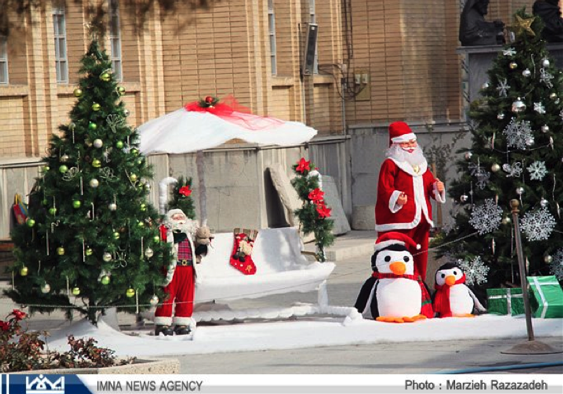

The ~120,000 Armenians remaining in Iran today are designated two seats in the Iranian Parliament (Majles) and granted freedom of worship, as well as the right to a Christian, Armenian-language education in private secondary schools. And while the Armenians are certainly adored by their Iranian compatriots at large–with whom their kinship dates back at least nominally to the Aryan invasion of the Near East–they are often overlooked in spite of their centuries-long contributions to their homeland. After all, Armenians were paramount in opening up Persia to the West before the age of Imperialism, and they introduced a number of both Western and Eastern innovations to Iran including European firearms (1722) and the printing press (1636). It was Iranian Armenians who attracted Christian evangelists to open European language schools, including the forerunner to the French-language Jeanne d’Arc Academy in Tehran; who received and hosted European visitors to the capital throughout the Safavid period; and who recruited European instructors to teach at Persia’s first modern institute of higher learning, Dâr ol-Funûn (est. 1851).
Throughout the 19th century, Iranian Armenian tailors and jewelers introduced European fashions, and Armenian photographers and filmmakers were among the first in those professions. A hero from among their ranks, Yeprem Khan, played a pivotal role in the Iranian Constitutional Revolution of 1905, and young Armenians were “martyred” alongside their Muslim brothers during the Iran-Iraq War. Perhaps some of us are more familiar with the big Iranian Armenian names in the Persian music industry like Vigen, Andy, Helen, Martik, Serjik, Elcid, or sports luminaries such as footballer Andranik Teymourian and worldwide tennis idol Andre Agassi, or even Iran’s first female astronomer and physicist, Alenush Terian. It is in light of all of this that the people most aptly call themselves Parskahay (“Perso-Armenian”), as distinct, long-time actors in the dynamic but inclusive nation they call home.


But perhaps the most fascinating historical narrative of Iranian Armenians takes us back four centuries, to the Safavid period. Shah Abbas I (ruled 1587-1629) is one of the most celebrated Safavid Kings, in part due to his vision of geopolitical centralization and his reconquest of lost peripheral provinces from the neighboring Ottomans and Uzbeks. But among his most unique contributions was the establishment of a world-class commercial district in his new capital city, Isfahan, wherefrom Iranian silk was exchanged for European silver. What’s more, this district was governed by a private land-owning merchant oligarchy comprised of an independent council and a Christian provost (kalântar) appointed by the Shah, whose vision it was to bypass the land route through the Ottoman Empire and redirect the silk trade through central Iran and the Persian Gulf. It was here in Isfahan that, not unlike the Sephardic Jews of the Ottoman Empire, a group of elite Armenian silk traders were brought to serve as the backbone of the Safavid economy and establish a sphere of commercial and financial transactions in over a hundred cities spanning from Burma, India, and China to Russia, the Ottoman Empire, Venice, Amsterdam, Sweden, and Mexico.

The Safavids are known to have introduced a considerable number of Caucasian elements into the Persian society, and this phenomenon continued throughout the Qajar period. Ultimately the story of New Julfa represents an aberration from the mercilessness and hardship associated with earlier Caucasian campaigns under Shah Tahmasp I, who forcefully uprooted and oftentimes converted over 70,000 Armenian, Georgian, and Circassian families and resettled them in Gilan, Mazanderan, Fars, and within Isfahan and scattered villages in the city’s environs as part of his destructive scorched-earth policy against Ottoman advances in the Caucasus. Among the war prisoners of Caucasian campaigns, young men were trained as royal pages (ghulâmân-e khâssa or qapı qulları) and came to serve as important constituents of Safavid civil and military administration, while Caucasian women quickly became the favorite concubines of the Safavid harem. Georgian and Circassian Queen-Mothers formed factions and competed to promote their own sons to the throne throughout the Safavid period, and a certain politically-keen Circassian woman named Pari-Khan Khanum acted as a king-maker in two instances in the middle of the 16th century. Krusinski even insists that the influence of Georgian [and Circassian] harem women accounted for the Safavid tolerance of the empire’s Christian population. Of Shah Tahmasp II’s nine sons who reached adolescence, five were born of Caucasian mothers: four Georgians and one Circassian.
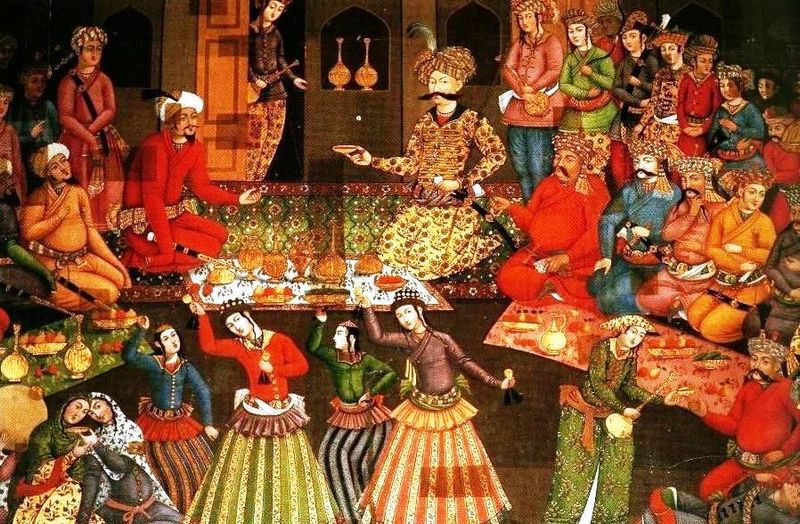
The narrative of New Julfa, however, is instead a story of planned population movement accompanied by at least outward religious tolerance on the part of the Safavid Porte. In 1605 the Shah issued a farmân, or royal decree, ordering the destruction a wealthy town of Armenian silk traders on the Araxes River called Julfa and forcing its inhabitants on a year-and-a-half exodus to a luxurious custom-designed suburb of the Safavid capital Isfahan. Once there, the deportees would join the empire’s elite and serve as an indispensable organ to the Safavid economy. But despite the exceptional provisions taken by Shah Abbas, the exodus of the Julfans was not an easy one—contemporary accounts such as that of the Armenian chronicler Arak’el of Tabriz detail the plight and suffering of the Julfan Armenians, hundreds of whom perished during the harsh winter they were forced to spend in Tabriz. Over half a century later in 1652, Shah Abbas II would again dispatch troops to the Caucasus with the sole purpose of destroying the ruins of Old Julfa a second time, perhaps to symbolize the finality of the Julfan Armenians’ residence in Isfahan and their indispensable value to the Safavid state.
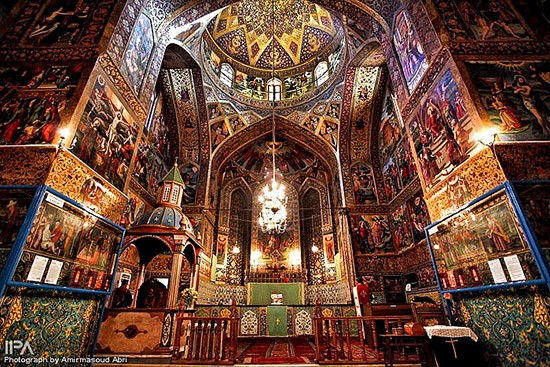
Shah Abbas I named this new suburb of Isfahan “New Julfa”, (Nor Jugha in Armenian), which was strategically located across from the Old city and the royal grounds via the iconic Si-o-Se Pol bridge built by the ghulâm Allahverdi Khan Undiladze, himself a Georgian convert and close confidant to the court. The architects of the suburb were ordered to build churches and mansions in the Islamic Persian style, but ultimately the suburb picked up a unique artistic heritage of its own that incorporated many Armenian and Western European elements. Many of the homes were palatial in structure, with formal reception areas, and echoed the lavishness of the Safavid palaces themselves. Indeed contemporary travelers such as Jean Thevénot and Jean-Baptiste Tavernier express awe in their accounts at the wealth and grandeur of this quasi-autonomous Armenian suburb. Gabriel de Chinon, a french traveler to the city, clearly states that apart from the Shah’s palace there was no place as beautiful as the house of the Shafraz family in New Julfa.
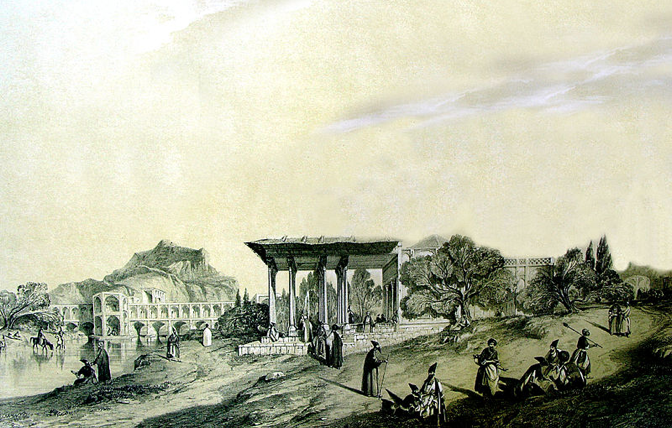
It follows that as the suburb was surrounded by gates, only its intended inhabitants were permitted to live there. Isfahan had grown to be a remarkably cosmopolitan city as the capital of the Safavids, with sizeable communities of Armenians, Georgians, Circassians, Turks, Indians, Jews, Zoroastrians, and also Chinese, Indians, Dutchmen, Spaniards, Englishmen, Italians, Frenchmen, Germans and the like. In time, Isfahan became home to no less than 24 Armenian churches and the Armenian population of New Julfa and scattered villages in the city’s environs grew to include some 50,000 souls. However a vast constituent of Isfahan’s Armenian population in the early 17th century was in fact located across the bridge in the Old City center and had been settled there among Muslims in the aftermath of earlier Caucasian campaigns. These Armenians, who were low-income artisans and laborers, were forbidden from living among the silk merchants in New Julfa. By the mid-17th century, it is related that their “Christian habits” of ringing church bells and wine-drinking had thoroughly irked their Muslim neighbors, who eventually convinced Shah Abbas II to expel them from Isfahan entirely.
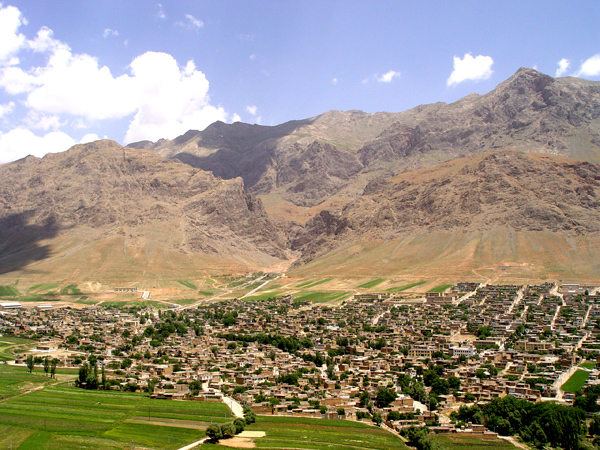
New Julfa thus represents a unique episode of royal favoritism for an ethno-religious minority in Safavid Persia, even vis-à-vis other Armenians in the kingdom. The Shah was bent on maintaining the integrity of the New Julfan community so they would not succumb to the fate of other Caucasian deportees–namely disintegration, assimilation, and social and economic dissolution. By keeping the New Julfans unconditionally content, the Shah was overlooking royal and clerical biases against non-Muslims in order to guarantee economic prosperity for his realm. But while Shah Abbas I came to foster very warm personal relationships with the Armenian merchant families of Isfahan–and the New Julfans quickly reached heights of opulence beyond that imaginable for many of their Muslim counterparts–the future of this delicate diaspora in central Persia was all but certain.
Sources
“Julfa Safavid Period” — Vazken S. Ghougassian
The History of the Revolutions of Persia — Tadeusz Jan Krusinski
“Georgia viii. Georgian communities in Persia” — Pierre Oberling












11 comments
Reblogged this on Notes of a Spurkahye and commented:
Beautiful post about the Armenians in Nor Julfa!